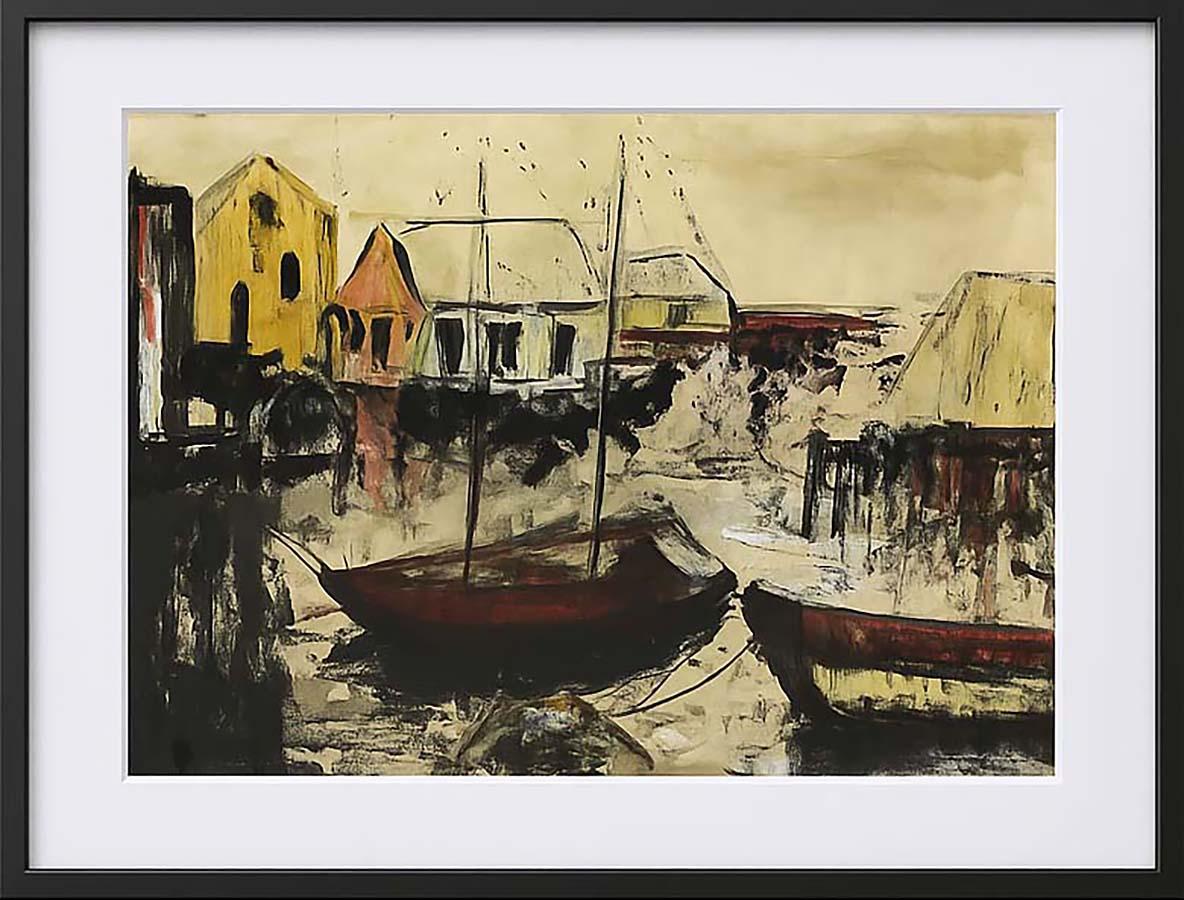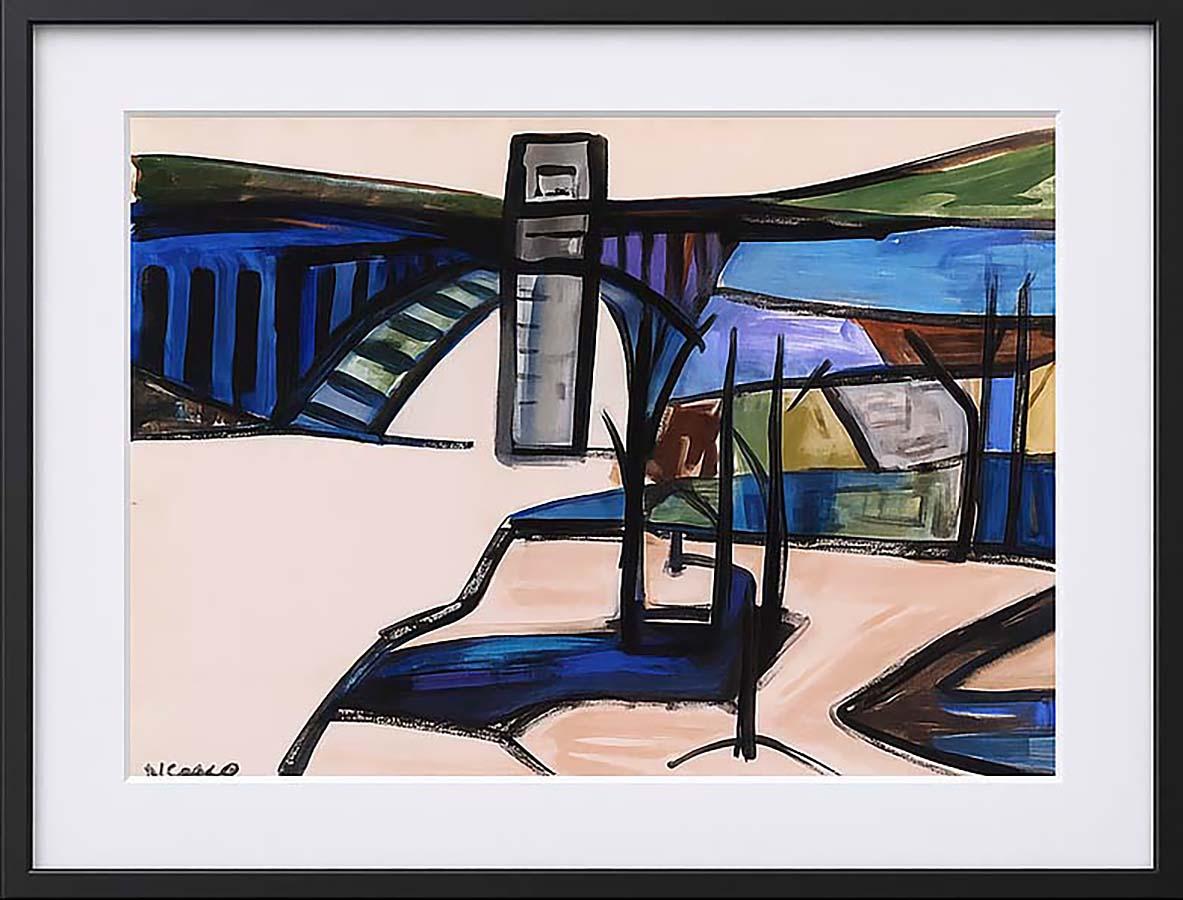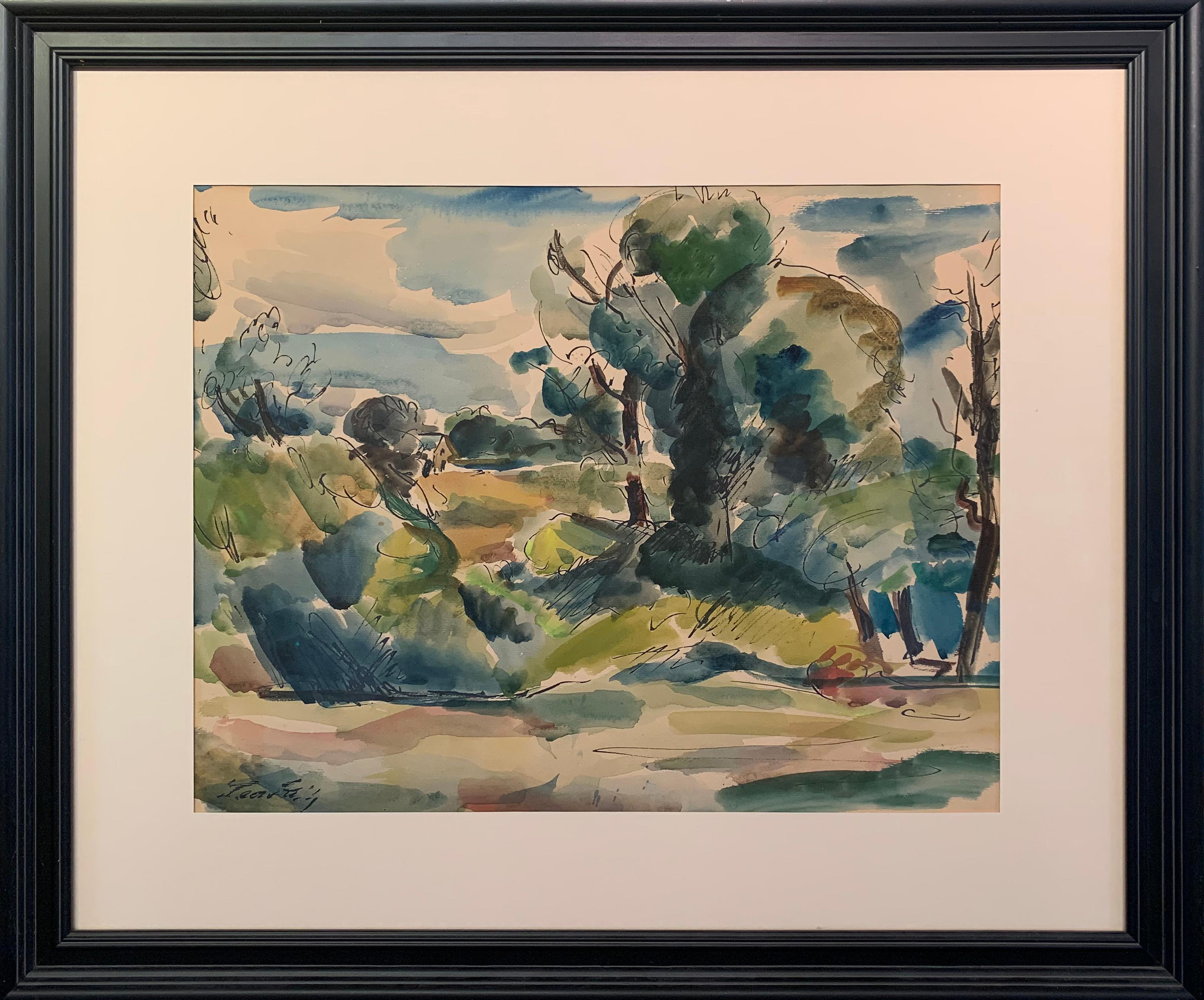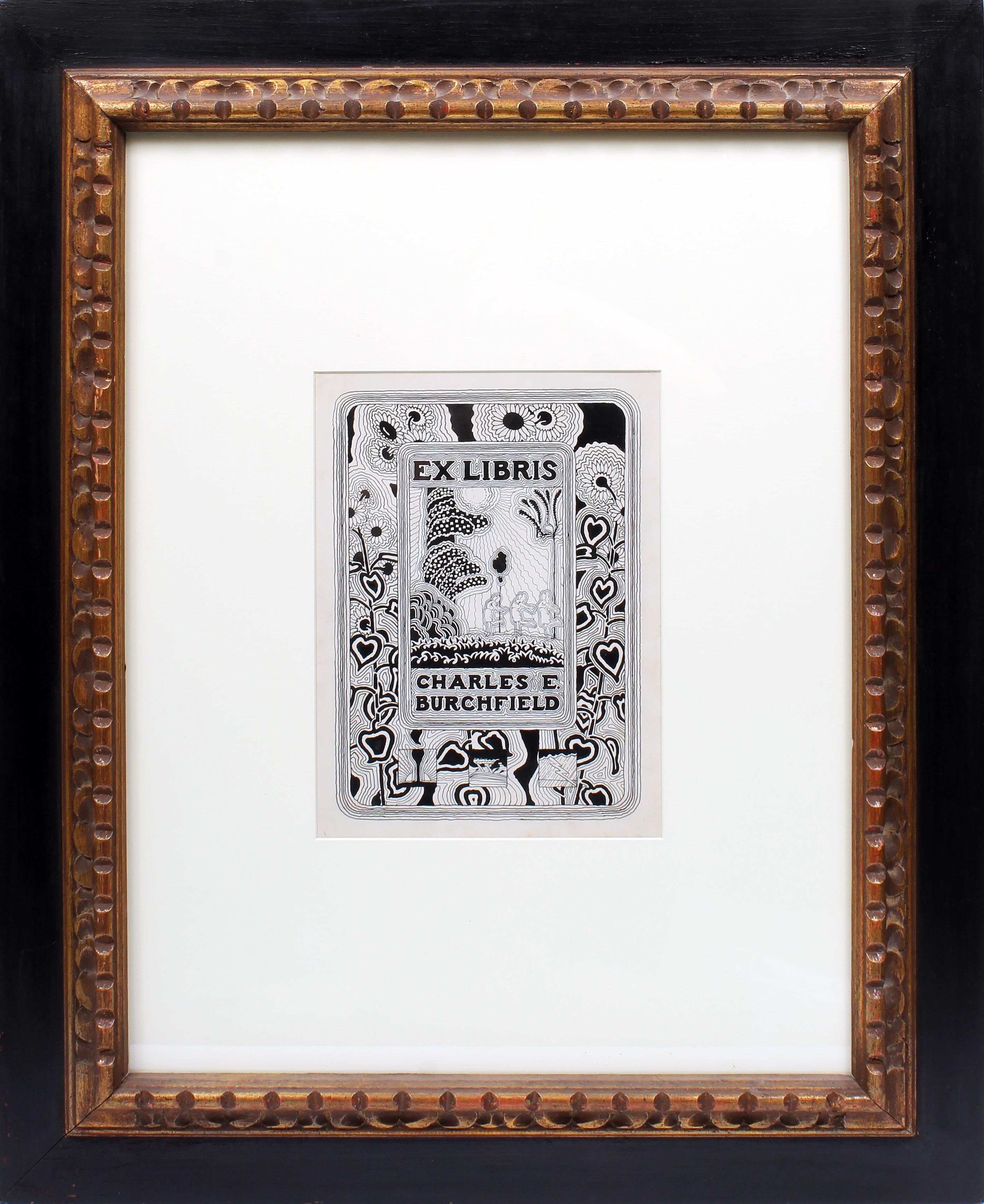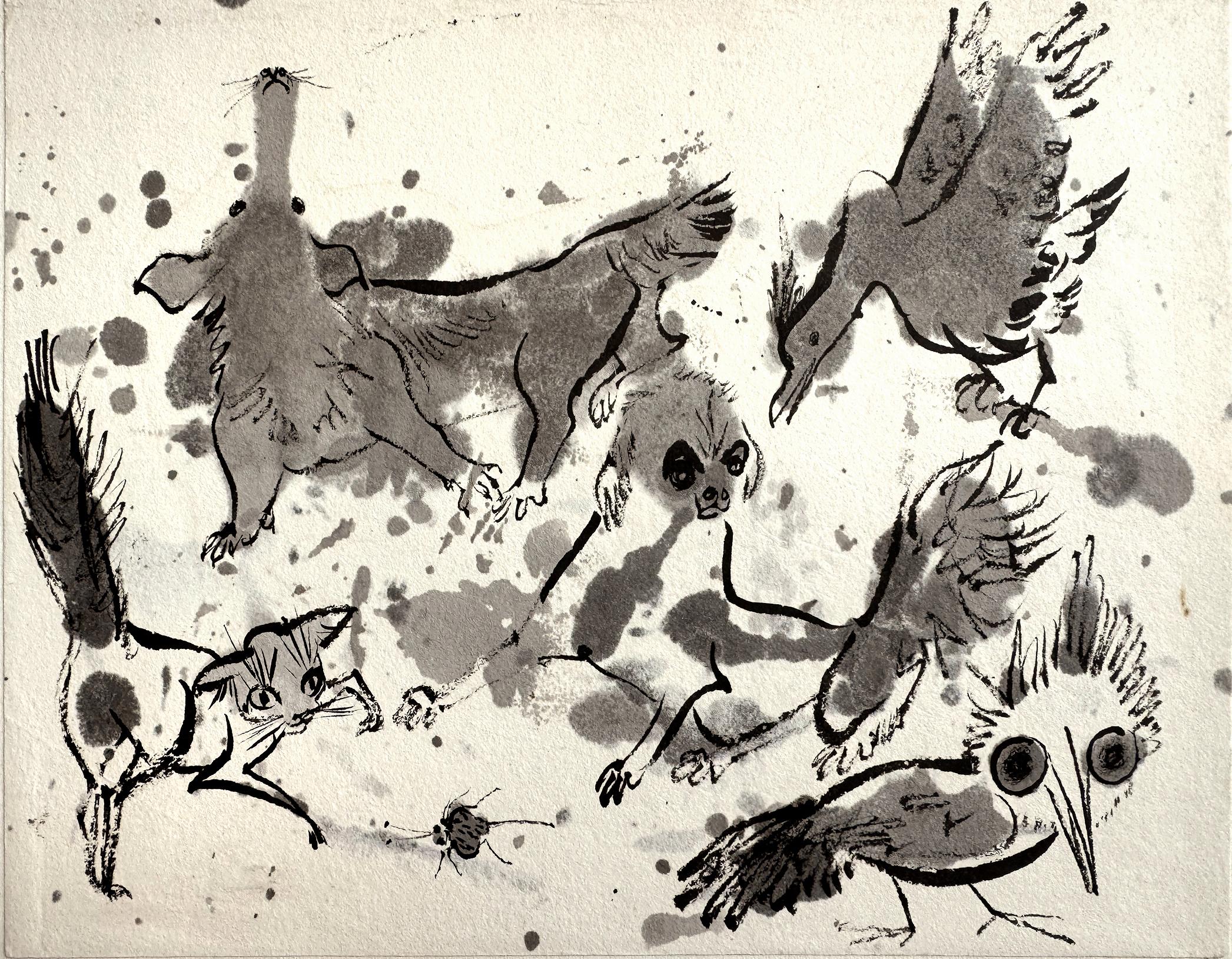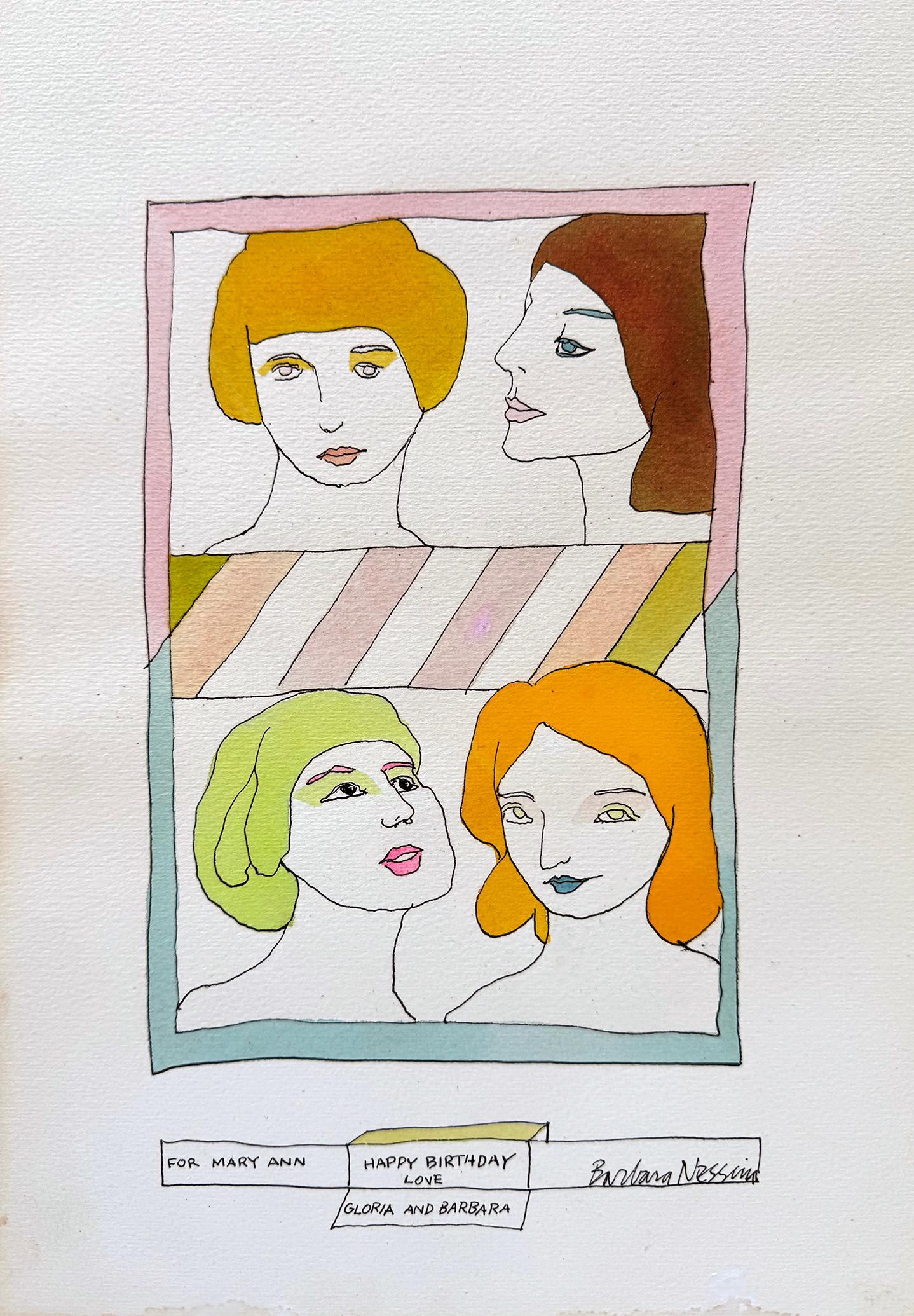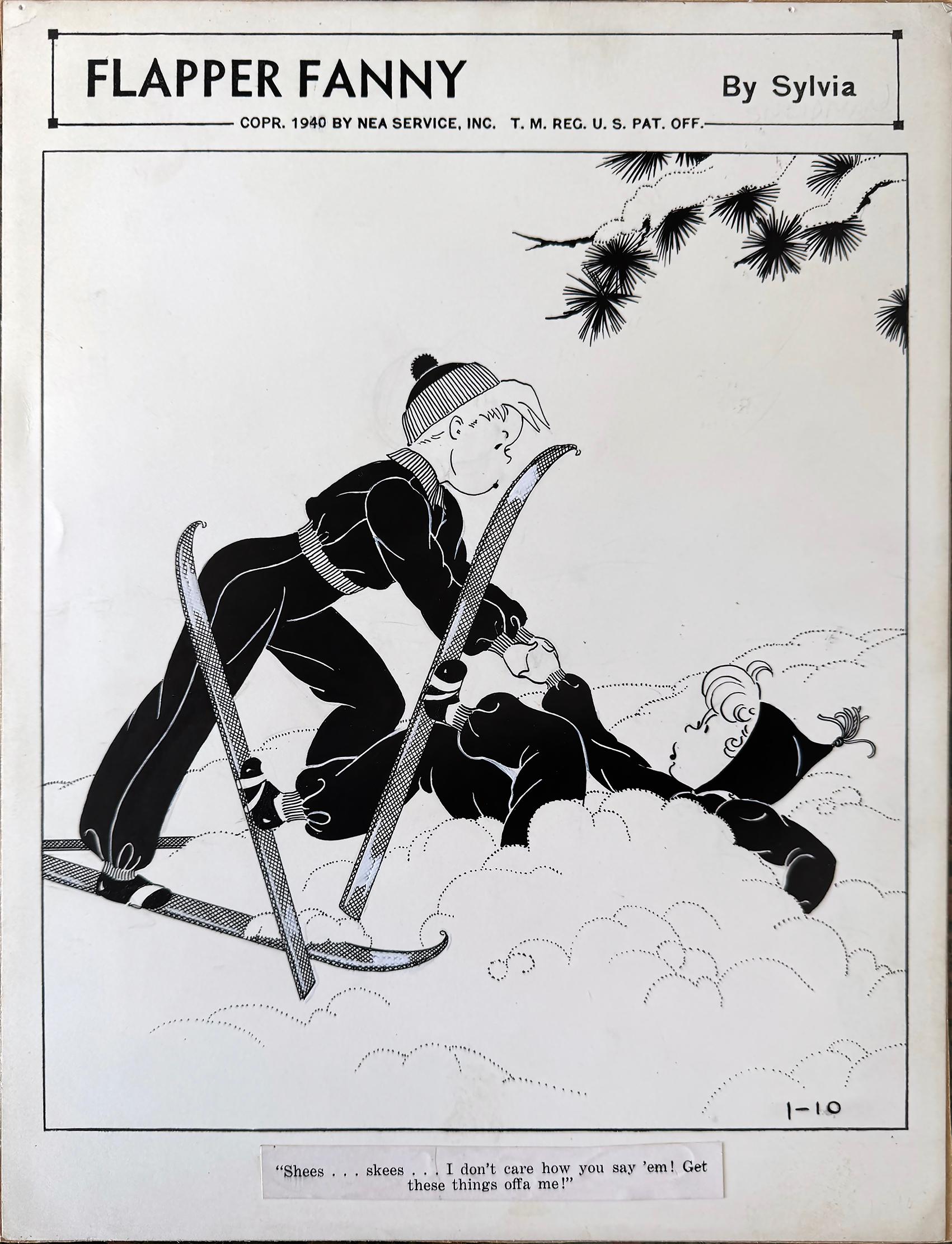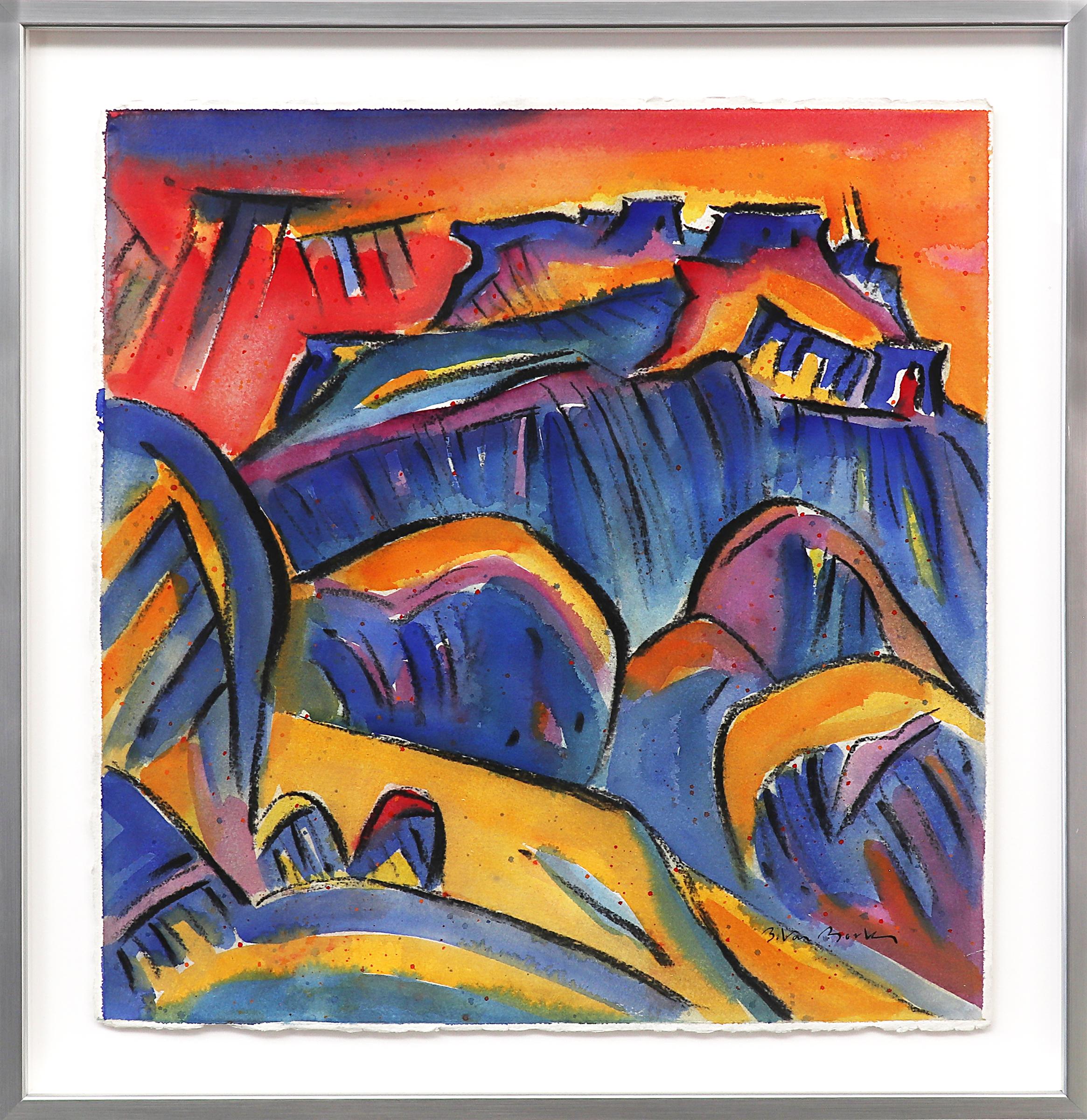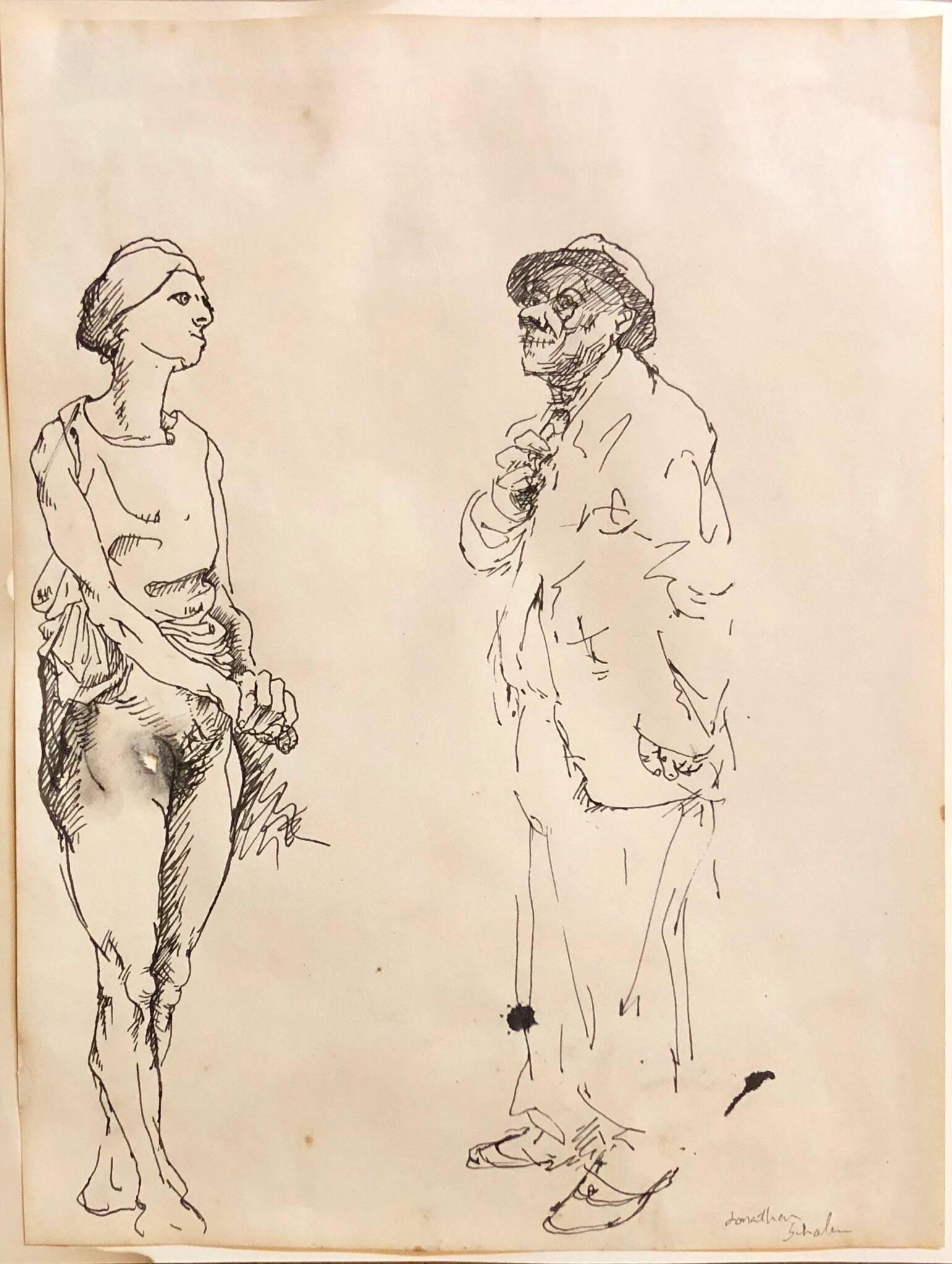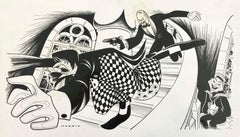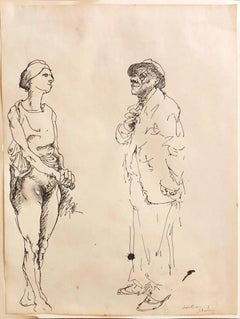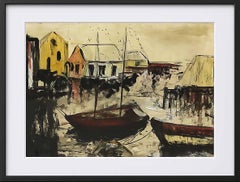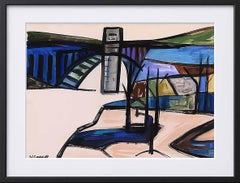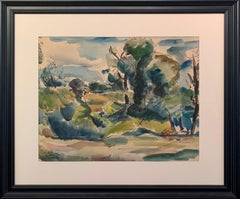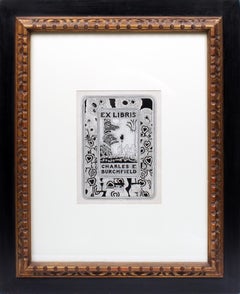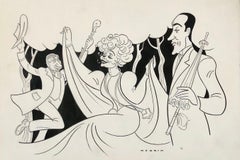
The Cherry Orchard Igor Kvasha, Marina Neyolova, Sergei Garmash Illustration Art
View Similar Items
Want more images or videos?
Request additional images or videos from the seller
1 of 8
Sam Norkin The Cherry Orchard Igor Kvasha, Marina Neyolova, Sergei Garmash Illustration Art
Price:$400
$500List Price
About the Item
- Creator:Sam Norkin (1917 - 2011)
- Dimensions:Height: 12.5 in (31.75 cm)Width: 16.8 in (42.68 cm)
- Medium:
- Movement & Style:
- Period:
- Condition:edges worn, bottom left corner bent and a couple minor stains.
- Gallery Location:Surfside, FL
- Reference Number:1stDibs: LU38214583712
About the Seller
4.9
Platinum Seller
Premium sellers with a 4.7+ rating and 24-hour response times
Established in 1995
1stDibs seller since 2014
1,801 sales on 1stDibs
Authenticity Guarantee
In the unlikely event there’s an issue with an item’s authenticity, contact us within 1 year for a full refund. DetailsMoney-Back Guarantee
If your item is not as described, is damaged in transit, or does not arrive, contact us within 7 days for a full refund. Details24-Hour Cancellation
You have a 24-hour grace period in which to reconsider your purchase, with no questions asked.Vetted Professional Sellers
Our world-class sellers must adhere to strict standards for service and quality, maintaining the integrity of our listings.Price-Match Guarantee
If you find that a seller listed the same item for a lower price elsewhere, we’ll match it.Trusted Global Delivery
Our best-in-class carrier network provides specialized shipping options worldwide, including custom delivery.More From This Seller
View AllMan w Gun "Sleuth" Original Ink Drawing Theater Film Caricature Illustration Art
Located in Surfside, FL
Samuel Norkin (January 10, 1917 – July 30, 2011) was a Brooklyn, New York-born cartoonist who specialized in theater caricatures for more than even decades. His drawings of theater, opera, ballet and film celebrities appeared in Variety, Backstage, The Philadelphia Inquirer, The Washington Post, Los Angeles Times, The Boston Globe and many other publications.
Norkin learned composition and anatomy from the muralist Mordi Gassner. He received a scholarship to the Metropolitan Art School after his high school graduation, and he later attended Cooper Union, the Brooklyn Museum Art School and the School of Fine and Industrial Art. During the 1940s, newspaper editors wanted to devote more space to new theatrical productions, but photo opportunities usually did not happen until a show opened. Norkin took advantage of the situation and gained access to rehearsals, performers, costume sketches, fittings and scenic designs, providing editors with illustrations prior to an opening.
From 1940 to 1956, his theatrical illustrations were a regular feature in the New York Herald Tribune. Then for the next 26 years, he covered the performing arts for the Daily News. Since 1940, Norkin has had more than 4000 drawings published.
When he began doing theatrical caricature, he supplied his own captions, which eventually prompted him to write articles and reviews. He was an art critic for the Carnegie Hall house program and a cultural reporter for the Daily News.
Norkin's theater reminiscences and 266 drawings came together in the book Sam Norkin, Drawings, Stories (Heinemann, 1994), which was reviewed by David Barbour:
A Norkin caricature cartoon is often densely packed with detail and may feature a great deal of solid black space. He also is more daring in his drafting; many of his pieces, in particular one from the Broadway production of The Phantom of the Opera, feature steeply raked lines which plunge vertiginously from top to bottom, to highly dramatic effect. On the other hand, many of Norkin's effects border on the surreal. His version of Michael Jeter and Jane Krakowski in Grand Hotel depicts the pair as a series of interrlated curves; Jeter, in particular, looks like a machine that you crank up and let loose on stage. His version of Constance Cummings as a stroke victim in Wings, uses cruelly sharp angles to create a Cubist deconstruction of the actress's face and limbs, which mirrors the disintegration of the character's mental functions. Norkin offers a wide-ranging collection of his works... He also showscases actors at different points in their careers (as in a trio of portraits of John Gielgud and Ralph Richardson) and different takes on different productions (he gives us a number of Salomes from the Metropolitan and New York City Operas).
Exhibitions
Artwork by Norkin has been exhibited in the Lincoln Center Library and Museum of the Performing Arts, the Museum of the City of New York, the Metropolitan Opera House, the Hudson River Museum in (Yonkers, New York) and various galleries.
Awards
In 1942, Sam Norkin drew Joan Roberts, who was then starring on Broadway in Oklahoma!.
Various awards received over the years by Norkin include an award for "Outstanding Theater Art" from the League of American Theatres and Producers. (1980) and an award for “Lifetime Body of Work” (1995) from the Drama Desk, the association of drama critics, drama editors and drama reporters. Along with David Levine, Al Hirschfeld and Kin Platt he is one of the great artists of the American press. He received two awards from the National Cartoonists Society, the Special Features Award (1980) and the Silver T-Square Award (1984).
Sleuth is a 1970 play written by Anthony Shaffer. The Broadway production received the Tony Award for Best Play, and Anthony Quayle and Keith Baxter received the Drama Desk Award for Outstanding Performance. The play was adapted for feature films in 1972, 2007 and 2014.
The play is set in the Wiltshire manor house of Andrew Wyke, an immensely successful mystery writer. Wyke's home reflects his obsession with the inventions and deceptions of fiction and his fascination with games and game-playing. He lures his wife's lover Milo Tindle to the house and convinces him to stage a robbery of her jewelry, a proposal that sets off a chain of events that leaves the audience trying to decipher where Wyke's imagination ends and reality begins.
Shaffer said the play was partially inspired by one of his friends, composer Stephen Sondheim, whose intense interest in game-playing is mirrored by the character of Wyke, and by John Dickson Carr.
Paul Rogers and Keith Baxter in the Broadway production of Sleuth (1971)
Directed by Clifford Williams, Sleuth opened on 12 January 1970 at the Royal Theatre in Brighton, England. The play eventually transferred to the United States and opened on Broadway on November 12, 1970, at the Music Box Theatre, where it ran for 1,222 performances. Anthony Quayle and Keith Baxter starred as Andrew Wyke and Milo Tindle, with other parts listed as played by Stanley Wright, Sydney Maycock and Liam McNulty.
When Quayle left the production in 1972, he was succeeded by Paul Rogers, George Rose...
Category
20th Century American Modern Drawings and Watercolor Paintings
Materials
India Ink, Archival Paper
Ink Drawing Man in Suit and Hat with Nude
By Jonathan Shahn
Located in Surfside, FL
Provenance: Hinckley & Brohel Gallery
Jonathan Shahn, Born 1938 has been making sculpture, drawings and prints of the human figure since the early 1960s. He teaches at the Art Studen...
Category
20th Century American Modern Figurative Drawings and Watercolors
Materials
Paper, Ink
Rare 1950s Original Syndicated Ink Drawing Cartoon Strip Susie Q Smith Comic Art
Located in Surfside, FL
SUSIE Q. SMITH
Medium: Newspaper comics
Distributed by: King Features Syndicate
First Appeared: 1945
Creators: Linda and Jerry Walter
6.25 X 18.25
Like her contemporaries, Aggie Ma...
Category
1950s American Modern More Art
Materials
Paper, Ink
Rare 1950s Vintage Syndicated Ink Drawing Cartoon Strip Susie Q Smith Comic Art
Located in Surfside, FL
SUSIE Q. SMITH
Medium: Newspaper comics
Distributed by: King Features Syndicate
First Appeared: 1945
Creators: Linda and Jerry Walter
5.5 X 19.5
Dated August 13, 1954 in top right corner.
Like her contemporaries, Aggie Mack, Candy and Patsy Walker (before her conversion to a superhero), Susie Q. Smith was a female Archie-type — not exactly an imitator, because Archie, who had started only four years earlier, hadn't yet become popular enough to spawn imitators, but part of his genre. She attended high school, where her teachers often seemed unreasonable to her, interacted with the opposite gender in a typically adolescent way, and her parents didn't completely understand her. And she was cute and perky as only a teenage girl can be.
Susie was the star of a comic strip distributed by King Features, the biggest of the comic strip syndicates, whose other offerings have ranged from Jackys Diary to Prince Valiant. King launched the strip in both daily and Sunday form in 1945. Daily, she was only in a panel at first, but it expanded into a full, multi-panel strip on February 7, 1953. In a very odd turn of events, in 1953 the Walters chose to leave King Features behind and hitch their wagon at the McNaught Syndicate. The creators were Harold "Jerry" Walter and his wife, Linda. Jerry was also responsible for Jellybean Jones, who has nothing to do with Jughead Jones's young sister, a modern-day addition to the Archie cast of characters. Together, they did The Lively Ones during the 1960s. Though each was capable of doing both major jobs in comic strip production, their usual working method was for Jerry to dream up the ideas and write the dialog, while Linda did the artwork.
The Walters also collaborated on a series of Susie Q. Smith comic books for Dell Comics. Instead of reprinting newspaper strips, these ran new stories by the Walters. Between 1951 and '54, four issues were published as part of the Four Color Comics series, where many minor comic strips, including Dotty Dripple, Timmy and Rusty Riley had found a home. It had no other media spin-offs.
Susie Q. Smith had a respectable run in the newspapers, but it ended in 1959.
Jerry Walter (1915 - 2007) was an abstract expressionist artist whose output of energetic and colorful paintings were the products of the rich artistic milieu of post-war New York City. He was born Harold Frank Walter in Mount Pleasant, Iowa on November 25, 1915. After graduating from Colgate University in 1937, Walter moved to New York City, where he studied drawing and painting at the New School and the Art Students’ League. Before concentrating seriously on his art, he spent several years as a successful copywriter and idea man for the advertising agencies of J. Walter Thompson, McCann Ericson, and BBDO. During this time, he also worked as a syndicated cartoonist. Collaborating with his wife, Linda, his best-known series was Susie Q. Smith, which first appeared in 1945 and described as a “female Archie type.” Very popular, the cartoon was later the subject of a series of comic books published from 1951 to 1954. After serving in the United States Army for three years during World War II, Walter began to paint seriously. He ascribed his earliest artistic influence to Joan Miró, whose Dog Barking at the Moon (1926) he viewed when he was twelve, the year he published his first cartoon. Walter later wrote that jazz, “the first native expression of so-called modernism” was a strong influence on his work.
During the later 1940s, Walters spent time at the Research Studio in Maitland, Florida. Founded in 1937 by artist and architect J. André Smith and supported by the philanthropist Mary Curtis Bok, the Research Studio was a lively colony that hosted prominent artists, including Milton Avery, Ralston Crawford, and Doris Lee. While at the Studio, Walter’s work was purchased by Frank Crowninshield. A founding trustee of the Museum of Modern Art and editor of Vanity Fair, Crowinshield was a noted collector; his collection included important works by Pablo Picasso, Marc Chagall, Henri Matisse, Edgar Degas, George Bellows, and Pierre Bonnard. Returning to New York after his time at the Studio, Walter became an active member of the New York school of the abstract expressionist movement, and in the summer of 1956, Walter exhibited 13 paintings and a selection of drawings at New York’s Chase Gallery. The adroit manipulation of both color and composition evident in his work shows the influence of Abstract Expressionism, particularly Willem de Kooning, Arshile Gorky, and Hans Hofmann.
illustrator and female cartoonist Linda Walter was the talented female mind behind the beloved "Susie Q. Smith" comic strip. She played an instrumental role in shaping the cultural landscape through her vibrant illustrations. Known for the timeless charm of the "Susie Q. Smith" comic strip, Linda's artistry brought joy and laughter to countless readers during the 1950s and continues to resonate with fans across generations. She was part of the Woodstock artists community. from Women in Comics: Linda Walter was the artist of newspaper strip Susie Q. Smith, which was written by her husband, Jerry. It was syndicated by King Features Syndicate and ran from 1945 to 1959. The Walters also contributed original Susie Q. Smith stories to Dell's Four Color comic books from 1951 to 1954. From 1964-1965, they created a singled panel comic called The Lively Ones.
Vintage Golden Age of Comics era.
The Golden Age of Comic Books describes an era in the history of American comic books from 1938 to 1956. During this time, modern comic books were first published and rapidly increased in popularity. The superhero archetype was created. Between 1939 and 1941 Detective Comics (DC) and its sister company, All-American Publications, introduced popular superheroes such as Batman and Robin, Wonder Woman, the Flash, Green Lantern, Doctor Fate, the Atom, Hawkman, Green Arrow and Aquaman. Timely Comics, the 1940s predecessor of Marvel Comics, had million-selling titles featuring the Human Torch, the Sub-Mariner, and Captain America. Another notable series was The Spirit by Will Eisner.
Dell Comics' non-superhero characters (particularly the licensed Walt Disney animated-character comics) outsold the superhero comics of the day. The publisher featured licensed movie and literary characters such as Mickey Mouse, Donald Duck, Roy Rogers and Tarzan. Additionally, MLJ's introduction of Archie Andrews in Pep Comics #22 (December 1941) gave rise to teen humor comics, with the Archie Comics...
Category
1950s American Modern More Art
Materials
Paper, Ink
Rare 1950s Original Syndicated Ink Drawing Cartoon Strip Susie Q Smith Comic Art
Located in Surfside, FL
SUSIE Q. SMITH
Medium: Newspaper comics
Distributed by: King Features Syndicate
First Appeared: 1945
Creators: Linda and Jerry Walter
6 X 18.25
Like her contemporaries, Aggie Mack,...
Category
1950s American Modern More Art
Materials
Paper, Ink
"Stand up Tragedy" Marcus Chong Original Ink Drawing Theater Caricature Art
Located in Surfside, FL
"Stand up Tragedy" - Jack Coleman, Marcus Chong & Charles Cioffi
Samuel Norkin (January 10, 1917 – July 30, 2011) was a Brooklyn, New York-born cartoonist who specialized in theater ...
Category
20th Century American Modern Drawings and Watercolor Paintings
Materials
Paper, India Ink
You May Also Like
Watercolor Painting American Modern Painting Gloucester Harbor Female Artist
Located in Buffalo, NY
Dorothy Rivo
Gloucester Harbor, c. 1950s
Watercolor and ink on paper
Framed dimensions: 34 in. H × 30 in. W
Contemporary black frame with white archival mat
In Gloucester Harbor, Dorothy Rivo captures the gritty beauty of a working port with expressive brushwork and tonal depth. The scene unfolds in loose washes of ochre, rust, and charcoal, where weathered boats float before a jagged row of fishing sheds and coastal structures rendered in gestural lines.
Rather than striving for topographic precision, Rivo offers a painterly impression of the harbor—moody, atmospheric, and undeniably alive. The smudged foreground, dripping masts, and clouded sky convey both movement and memory, as if the harbor were emerging from a dream or dissolving into one.
Executed in watercolor and ink, this piece shows Rivo's command of mixed media and her deft ability to balance structure with spontaneity. It is a standout example of mid-century American waterfront painting...
Category
1940s American Modern Landscape Drawings and Watercolors
Materials
Archival Ink, Watercolor, Archival Paper
Watercolor Painting American Modern Painting Bridge Harbor Female Artist 1950
Located in Buffalo, NY
Dorothy Rivo
Untitled (Bridge Tower), c. 1960s–70s
Acrylic on paper, floated in a mat
Framed dimensions: 30 in. H × 24 in. W
Contemporary walnut or black wood frame with white archiv...
Category
1940s American Modern Landscape Drawings and Watercolors
Materials
Archival Ink, Watercolor, Archival Paper, Acrylic
Green Landscape, Watercolor and Ink on Paper, circa 1926
By Leon Kelly
Located in Doylestown, PA
"Green Landscape" by Philadelphia born modernist and surrealist painter Leon Kelly, is a framed and matted landscape painting. The 17.5" x 23.5" watercolor and ink on paper is signed...
Category
1920s American Modern Landscape Drawings and Watercolors
Materials
Archival Ink, Watercolor, Archival Paper
Rare Charles Burchfield Drawing Book plate Rare Black and White Museum Framed
By Charles E. Burchfield
Located in Buffalo, NY
An original rare bookplate drawing by Charles Burchfield featuring his most famous motifs of sunflowers.
Category
1910s American Modern Figurative Drawings and Watercolors
Materials
Paper, Archival Ink
Horse and Tree
By Robert Noel Blair
Located in Buffalo, NY
You are viewing a modernist American watercolor painting by Robert Noel Blair
Robert Noel Blair (American, 1912-2003) was an American artist, painter, sculptor, printmaker and te...
Category
1960s American Modern Abstract Drawings and Watercolors
Materials
Archival Ink, Paper, Watercolor
Cat, Dog, Bird, Monkey, Owl, Lady Bug Portrait - Alert Animals Illustration
Located in Miami, FL
British-American painter and Female Illustrator artfully renders six different animals closely grouped on one page. They are seen as individuals, but silhouetted, not relating to one...
Category
1950s American Modern Animal Drawings and Watercolors
Materials
Ink, Watercolor, Archival Paper
